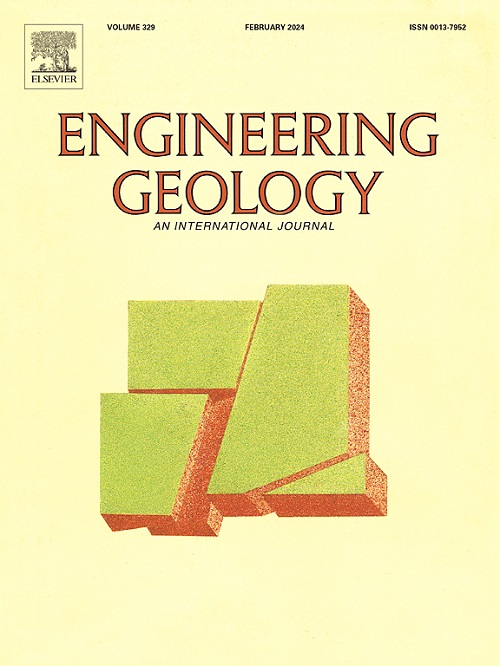Estimating VS30 structure from topographic and geological data in the southeast of Spain
IF 6.9
1区 工程技术
Q1 ENGINEERING, GEOLOGICAL
引用次数: 0
Abstract
The VS30 was introduced as a representative parameter of the site's seismic amplification and is currently considered to prescribe site-dependent design response spectra. Although the determination of VS30 by geophysical methods can be time-consuming, using empirical relationships between this quantity and the slope of the terrain is a rapid and very low-cost procedure that may be sufficient for some applications. A specific correlation at regional scale is performed using 3216 measurements of VS30 obtained from SPAC, MASW and Mini-array seismic methods, located within 8 municipalities belonging to the Spanish provinces of Almería, Granada and Murcia. The measurement points have been grouped into 10 classes with different seismic behavior according to the geological units represented on the Geological Map of Spain (MAGNA_50). Two relationships have been fitted: a) Model 1 consisting of a linear dependence between the logarithm of Vs30 and the ground slope; b) a linear relationship between log(VS30) and the slope including the dependence on the geological units through additive constants (model M2). The best-fitted regional Vs30 model is built from a DEM with a resolution of 100 m, in which the incorporation of geological units has demonstrated its convenience in reducing residual errors by up to 28 %. The mean absolute residual obtained at the VS30 sampling sites was 80 m/s for model M1 and 64 m/s for model M2. The mean estimated VS30 values obtained from model M2 range between 360 ± 130 m/s in the marshes and wetlands formation and 750 ± 69 m/s in the geological unit composed of quartzites, schists and phyllites.
根据西班牙东南部地形和地质资料估算VS30构造
VS30被引入作为场地地震放大的代表性参数,目前被认为规定了场地相关的设计响应谱。虽然通过地球物理方法确定v30可能很耗时,但利用该量与地形坡度之间的经验关系是一种快速且非常低成本的方法,可能足以用于某些应用。利用SPAC, MASW和Mini-array地震方法获得的3216次VS30测量数据,在区域尺度上进行了特定的相关性,这些测量数据位于西班牙Almería,格拉纳达和穆尔西亚省的8个城市内。根据西班牙地质图(MAGNA_50)上的地质单元,将测点分为10类,具有不同的地震行为。拟合了两种关系:a)模型1由Vs30的对数与地面坡度之间的线性关系组成;b) log(VS30)与slope之间的线性关系,包括通过加性常数(模型M2)对地质单元的依赖。最佳拟合的区域Vs30模型是由分辨率为100 m的DEM建立的,其中地质单元的合并已经证明它可以将剩余误差减少高达28%。在VS30采样点获得的平均绝对残差为模型M1为80 m/s,模型M2为64 m/s。M2模型得到的平均VS30值在沼泽和湿地地层中为360±130 m/s,在由石英岩、片岩和千层岩组成的地质单元中为750±69 m/s。
本文章由计算机程序翻译,如有差异,请以英文原文为准。
求助全文
约1分钟内获得全文
求助全文
来源期刊

Engineering Geology
地学-地球科学综合
CiteScore
13.70
自引率
12.20%
发文量
327
审稿时长
5.6 months
期刊介绍:
Engineering Geology, an international interdisciplinary journal, serves as a bridge between earth sciences and engineering, focusing on geological and geotechnical engineering. It welcomes studies with relevance to engineering, environmental concerns, and safety, catering to engineering geologists with backgrounds in geology or civil/mining engineering. Topics include applied geomorphology, structural geology, geophysics, geochemistry, environmental geology, hydrogeology, land use planning, natural hazards, remote sensing, soil and rock mechanics, and applied geotechnical engineering. The journal provides a platform for research at the intersection of geology and engineering disciplines.
 求助内容:
求助内容: 应助结果提醒方式:
应助结果提醒方式:


